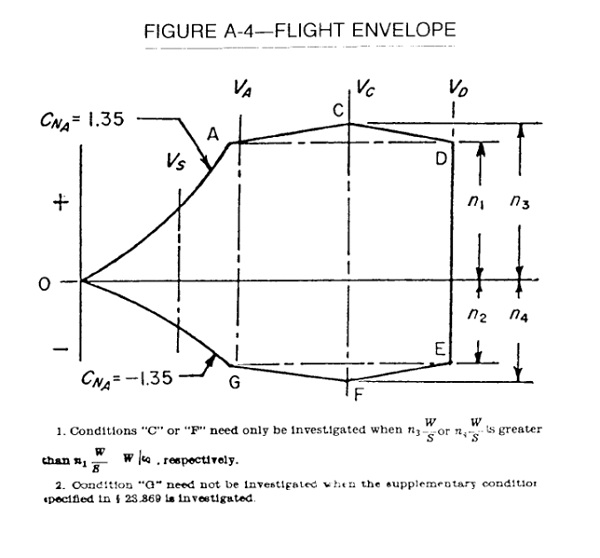<< flight engineer | flight envelope | flight following >>
Back to: "F"
flight envelope
- Definição1
- The defined conditions of air speed, altitude, g loading, sideslip, etc. the aircraft is permitted to operate within. It is a graph in which curves of the speed are plotted against altitude or other variables. It indicates the limits within which the aircraft can be operated safely.
- Fonte1
- KUMAR, Bharat (ed.). An illustrated dictionary of aviation. New York: McGraw-Hill, c2005. 752 p.
- Definição2
- (a) A diagram in which, for a particular aircraft type, the specified design normal accelerations (as multiples of g) form the ordinates and the corresponding equivalent airspeeds the abscissae. The boundary of the diagram forms a closed figure which defines the design limits for the aircraft concerned, for the specific flight altitude involved. (b) The range of flight conditions, defined by normal acceleration and equivalent airspeed, usually displayed graphically, whitin which an aircraft is permitted to fly.
- Fonte2
- MULTILINGUAL aeronautical dictionary, or, dictionary aeronautique multilingue: english, french, spanish, dutch, greek, italian,portuguese, turkish. London, England: Technical Editing and reproduction Ltd, 1980. xx, 876 p. ISBN 92835016667
- Fonte3
- INTERNATIONAL CIVIL AVIATION ORGANIZATION. Manual of aircraft accident and incident investigation. Part III: investigation. 1st ed. Montreal, 2011. (Doc. 9756)
- Contexto
- In the event of a more complex system failure, a flight regime near or exceeding the normal flight envelope (high speed, angle of attack, sideslip, rotational rates, etc.) or, if a significant amount of data needs to be recorded, an engineering or developmental simulator should be used.
- Subárea
- Aircraft Operations
- Français
- domaine de vol
- Imagem


